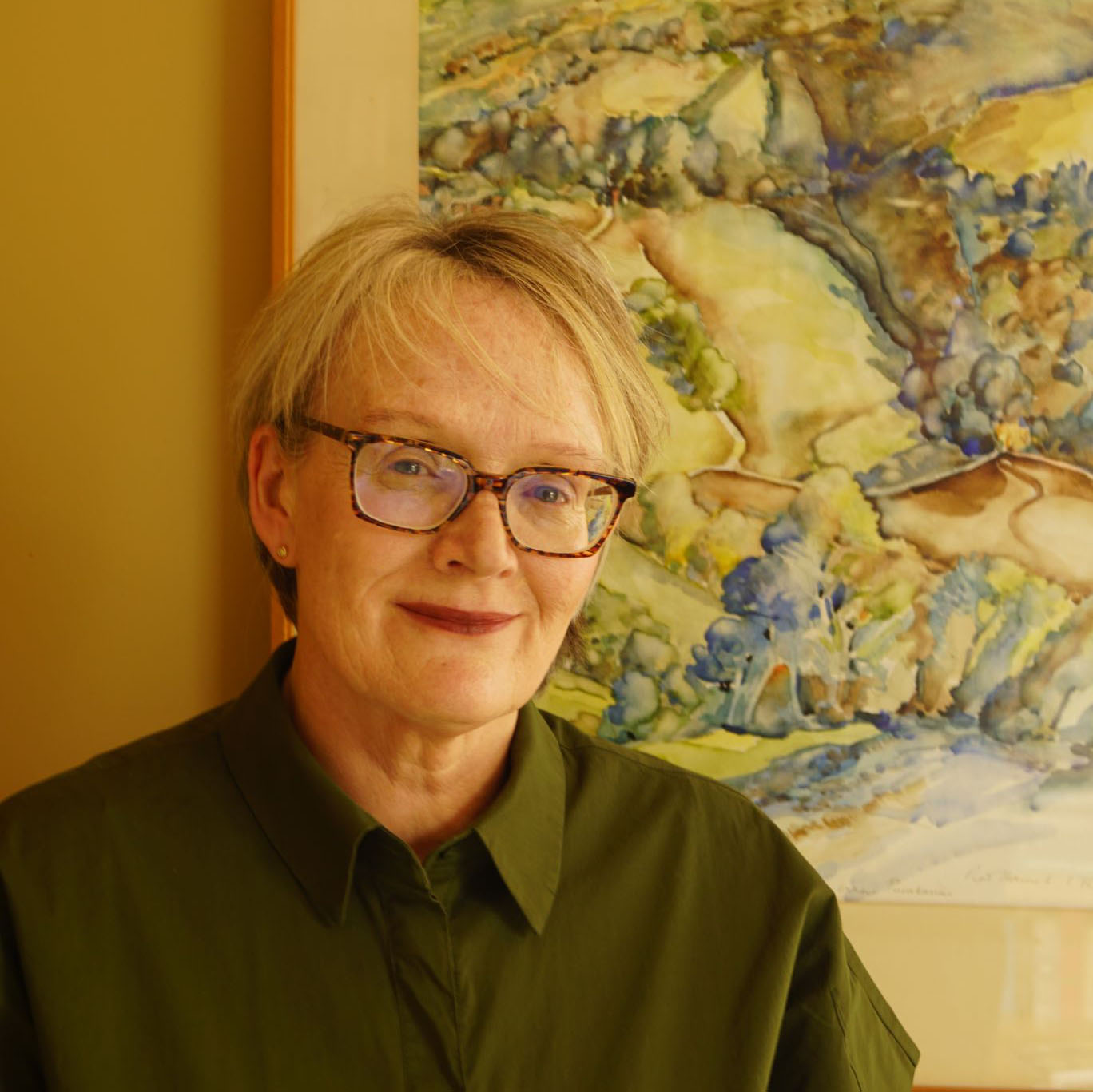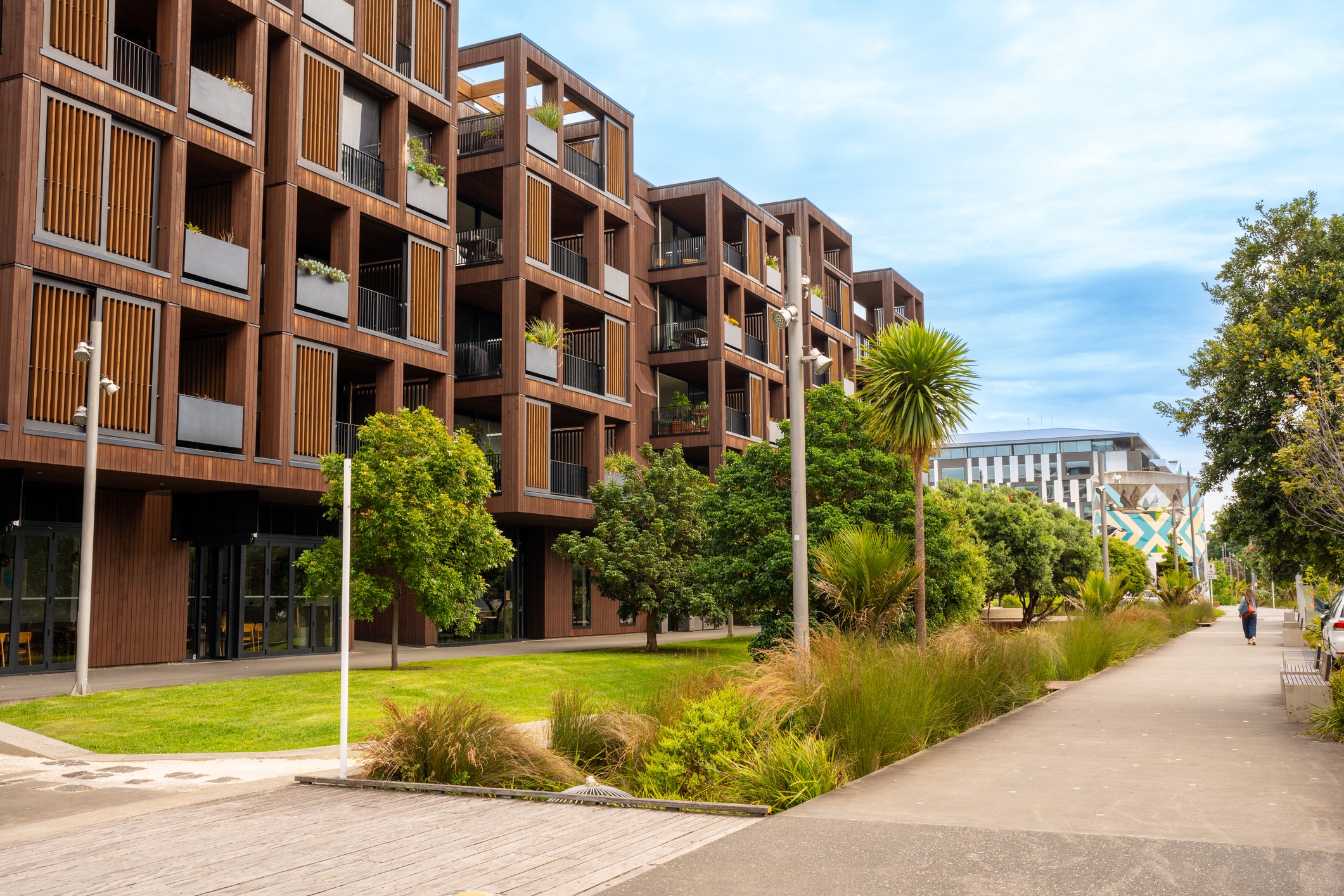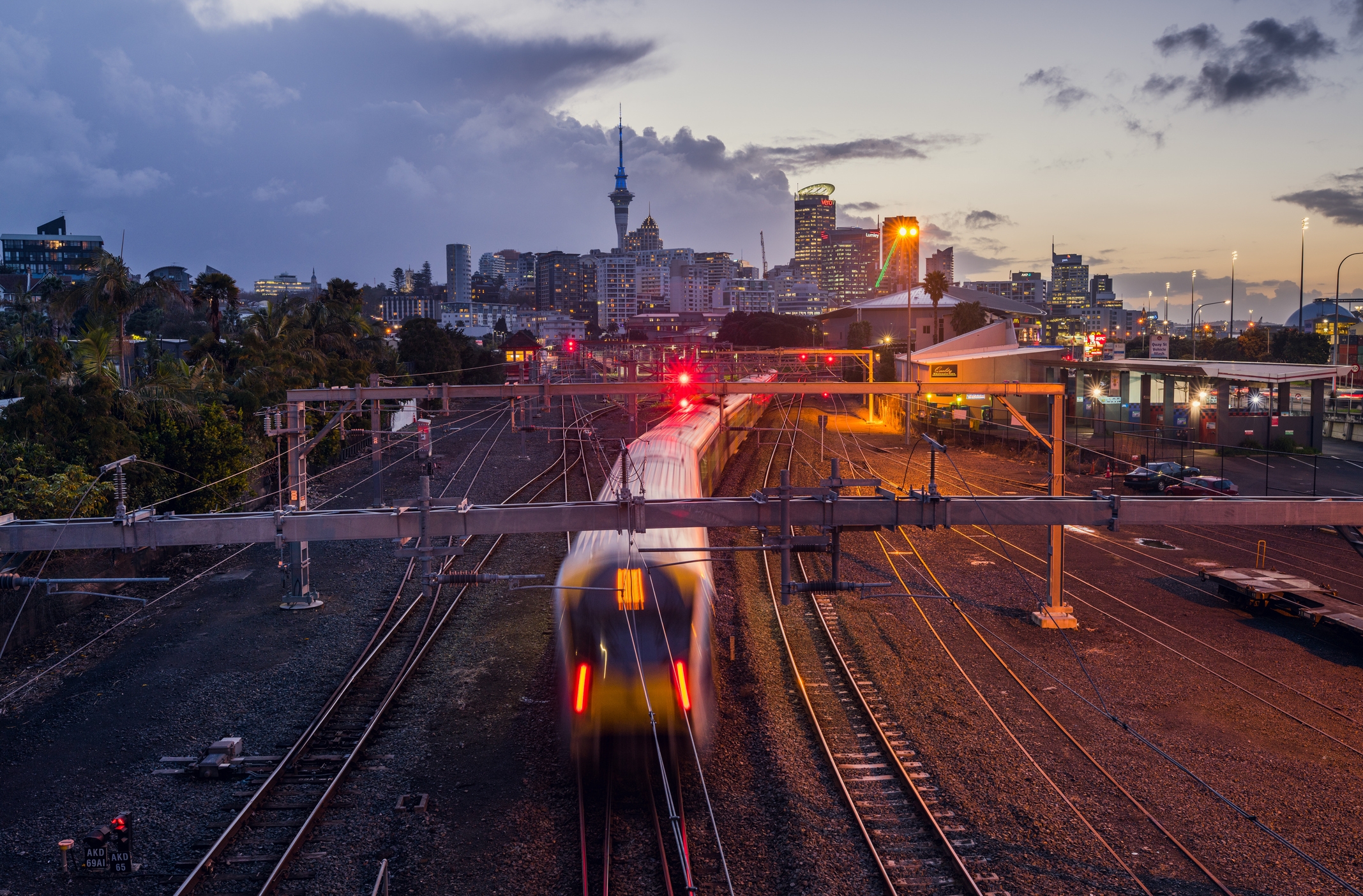Feature article
What new Auckland Council housing intensification proposals (PC 120) mean for you
Auckland's PC 120 housing plan explained: Find out how new council proposals boost home building near transport hubs.

Auckland homeowners are trying to get their heads around the latest planning proposals for housing intensification in their city which will affect the immediate world around them – their local hubs of shops, pharmacies, transport links, and so on – and in some cases the look of the streets they live on.
The proposed planning process for Auckland Council’s new housing plan is known as Plan Change 120 (PC 120). The withdrawal of the former plan, Plan Change 78 came about because the council wanted to strengthen its planning rules for building in high-risk areas for flooding. This meant withdrawing the Medium Density Residential Standards (MDRS) in order to amend “downzone” areas of the city that were flood prone. PC 120 will enable more homes to be built near key transport hubs and urban centres instead.
We’ve tried to do the hard work for you –and to put it in an easy-to-understand article you can call on when the need arises.
Apartments in Auckland's Wynyard Quarter
With the Government’s permission, Auckland Council has waved farewell to Plan Change 78 which enabled a lot of three-storey housing all over Auckland. One of the downsides to this was three home, three storey developments were just “being plonked” in random sites around the city not necessarily near good transport links.
Most worryingly, it also allowed for building to happen in flood prone zones, which after the floods in Auckland in 2023 were still very front of mind to many Aucklanders. Nobody wanted to see new homes built in flood zones.
The Government agreed for Auckland Council to withdraw Plan Change 78, as long as it kept to the same amount of housing capacity for Auckland in the coming years.
Under PC 120, Auckland Council has said it will focus on new homes within walking distance to the city centre, to urban centres and transport links like train stations and busways.
Kingsland Train Station, close to Eden Park.
To make sure it still brings on plenty of new homes, the council is providing for more high-rise buildings of 10 and 15 storeys, these high-rise apartments to go in busy transport hubs like Newmarket, Manukau metro and Takapuna.
In the new plan proposal, buildings as high as 15 storeys are to be provided for around train stations that will benefit the new City Rail Link - Maungawhau (Mount Eden) railway station, Kingsland and Morningside train stations, while Mt Albert has two train stations where 10 storey buildings are to be provided for – Baldwin Ave and Mt Albert.
There will also be more apartment buildings of up to six storeys, approximately 200m back from the road, along a number of Auckland’s transport corridors which have frequent bus services.
Megan Tyler, Auckland Council’s Director of Policy, Planning and Governance, says: “We’ve met the Government’s requirement for significantly more housing capacity by focusing more housing choices near jobs, shops and everyday services, where housing demand and public transport access are highest.”
“This includes near train stations that will benefit from the City Rail Link bringing more fast, frequent services, stops on rapid busways and along some frequent bus routes.”
Nineteen thousand passengers an hour are expected to be able to use Auckland’s City Rail Link at peak times when it opens.
Meanwhile town centres like Manukau and New Lynn which cater to more people than local centres, offer great transport links and a wider range of jobs, shops and services will have their THAB-zone extended by around 400 m from the town centre with PC 120.
A lot of the National Policy Statement on Urban Development, which is all about NZ towns and cities being well-functioning urban environments, has been retained.
Concerns and objections by Aucklanders
Naturally whenever there is a proposed housing plan change in a big city, there are concerns and worries, and these weren’t helped by a certain amount of misinformation circulating during the recent local elections.
Some residents have been worried that town centres won’t have the infrastructure needed to accommodate these planned high-rise buildings.
Auckland University senior architecture lecturer Bill McKay says infrastructure and building density tend to happen hand in hand.
“It’s easier to fix existing infrastructure like roading and draining as you go in response to demand and it’s certainly cheaper than developing brand new infrastructure in new suburban greenfield developments,” say McKay.
A lot of isthmus areas have been upzoned to Mixed housing Urban, which will lead to more two to three storey buildings which are better planned than the “scattershot”MDRS, says McKay.
So while Takapuna is likely to get more high-rise apartments, so it will be like “the Gold Coast” of the North Shore, Mt Eden village is more likely to have four and five storey buildings than 15 storey ones in reality, he believes.
Having more apartment buildings close to your town centre will be a positive for many Aucklanders, he points out.
“The more people are living in your neighbourhood, the bigger the centre of gravity and your shops will be more sustainable,” says McKay.
In essence, there won’t be big buildings suburb by suburb. It’ll be those parts of the suburbs that are on the main roads or bus routes, or around a train station, he says.
What two Auckland homeowners say
Two homeowners in Mt Eden and Kingsland spoke to Trade Me Property about their concerns.
Rebecca, who lives with her husband Alistair, on Valley Road in Mt Eden, says she worries about 10 or 15 storey buildings going up in Mt Eden village and that if an apartment building goes up two places down from her family home, it will lead to a drop in value on her house, though that would depend on the quality of the apartment building that goes up.
A nearby development site is for sale at the moment, she says.
“In theory that could now go up to six storeys which is good news for the sellers but not for us.”
Claudia and William live in Kingsland Avenue in Kingsland and love its proximity to a number of transport links.
Claudia is open to housing intensification generally and for more apartment buildings to go up by Kingsland train station but is less keen on it in her street.
“My big issue is light and what does it do to my property,” says Claudia. And privacy.
“The minute I get overlooked, I understand my property will go down at least 20%, it’s a big chunk of equity to lose.”
Plan Change 120 is in proposal stage and Auckland residents have until 19 December to send their submissions in.
Some more information here.
Character houses in Auckland's Kingsland.
Some key takeaways on PC 120
There will be 66 walkable catchments across Auckland which enable terrace housing and apartment buildings, with heights up to 15 storeys, 10 storeys or 6 storeys, with a mix likely.
You can find the full list of walkable catchments in the blue table in this information sheet: PC120 Info Sheet 05 - Intensification in Walkable Catchments
5 walkable catchments around train stations that will benefit from the new City Rail Link will have buildings with heights of 10 or 15 storeys
These are Maungawhau – (Mt Eden) train station – 15 storeys (50m)
Kingsland Train Station – 15 storeys (50m)
Morningside train station -15 storeys (50m)
Baldwin Train station- 10 storeys (34.5m)
Mt Albert Train station – 10 storeys (34.5m)
PC120 also proposes to enable 10 and 15 storey heights to a number of other walkable catchments which have high demand for residential and commercial space, have more amenities, shops and a good level of access to public transport.
Walkable catchments identified for 15 storey heights (50m)
Waitemaata City Centre, Karangaha a Hape train station, Te Waihorotiu train station, Parnell train station, Newmarket metro centre, Newmarket train station, Manukau metro centre, Greenlane train station, Remuera train station, Otahuhu train station, Kingsland train station, Manukau train station, Albany bus station, Grafton train station, Maungawhau train station (Mt Eden), Panmure train station, Glen Innes train station, Takapuna metro centre, Henderson metro centre, Morningside train station, Henderson train station.
Walkable catchments which had been identified for 10 storey heights
Ellerslie train station, Baldwin Ave train station, Orakei train station, Avondale train station, New Lynn metro centre, Akoranga bus station, Albany metrop centre, Sylvia Park train station, Penrose train station, Westgate metro centre, Smales Farm bus station, Papatoetoe train station, Puhunui train station, Constellation bus station, Sylvia Park metro centre, Meadowbank train station, Mt Albert train station, Te Taha Wai bus station, Sunnynook bus station, William Ave bus station, Pakuranga bus station, New Lynn train station.
Walkable catchments identified for 6 storey heights (22m)
Manurewa train station, Middlemore train station, Botany metrop centre, Rosedale bus station, Drury Metrop centre, Pohatu bus station sp, Drury train station, Homai train station, Papakura train station, Ranui train station, Sturges Rd train station, Swanson train station, Koata bus station, Takaanini train station sp, Glen Eden train station, Te Mahia train station, Pukekohe train station, Ngakoroa train station sp, Papakura metro centre, Paerata train station sp, Fruitvale Rd train station, Sunnyvale train station.
Building heights might be reduced if there were “qualifying matters”.
24 Frequent Transit Network corridors
There will be more housing choices near key bus routes or Frequent Transit Network (FTN) corridors under PC120 with 24 largely in the Central Isthmus - North Shore around Birkenhead, Northcote and Takapuna and between Howick, Manukau, New Lynn and Henderson.
The proposal is for zoning residential sites within a 200m distance or approximately one block deep from each of the selected corridors to Residential Terraced Housing and Apartment buildings – (THAB) Zone. This change affects land currently zoned Residential- Single House, Mixed Housing Suburban or Mixed housing Urban zone.
PC120 is also looking at modifying the THAB zone to include building height of 6 storeys (22m).
In some areas, applying the THAB zone will be a significant change to the existing character of neighbourhoods.
The full 24 FTN intensification areas are in the blue table in this information sheet: PC120 Info Sheet 07 - Intensification beyond centres and stations
Botany to Manukau (via Ormiston), New North Rd, (Morningside to Avondale, Dominion Road (Mt Eden to Mt Roskill), Northcote- Takapuna, Ellerslie Greenlane, Onehunga-Newmarket (Manukau Rd), Glenfield – Birkenhead, Panmure Ellerslie, Great North Road (Ponsonby to Motat), Panmure-Mt Wellington-Sylvia Park, Great North Road (Pt Chev, Avondale, New Lynn), Papatoetoe-Otahuhu-Sylvia Prk, Greenland – Western Springs (via Balmoral), Smales Farm – Takapuna-Milford, Howick to Botany (via Meadowlands, Botany Rd), St Johns – Remuera - Newmarket, Mt Eden to Sandringham Rd via Valley Rd shops, St Lukes to Great North Rd, via Morningside and Kingsland, Mt Eden to Three Kings (Mt Eden Rd), St Marys Bay to Ponsonby, New Lynn to Henderson, Verrans Corner to Onewa Road, Sandringham Rd (Newtown to Sandringham), Greenlane East (Remuera Rd to Greenlane).
There are 23 local centres and 34 town centres
To meet the government’s housing capacity requirements, local centres, offering good transport connections, services, jobs and shops are proposed to become terraced housing and apartment zones. This provides for building of up to 6 storeys to go here, roughly 200 m back from the edge of the local centre. This is proposed for:
Albany Village, Balmoral, Blockhouse Bay, Botany Junction, Chatswood, Clendon, Dawsons Road, Drury, Eden Valley, Greenlane West, Grey Lynn, Hobsonville, Jervois Road, Kelston, Kepa Road/Eastridge, Lynfield, Mairangi Bay, Mangere East, Meadowbank, Meadowlands, Mount Roskill, Mt Wellington, Te Atatu South.
Town centres: Town centres cater to more people and offer great transport links, and a wider range of jobs, shops and services. In these areas, the terraced housing and apartment building zone is proposed to extend roughly 400 m from the edge of the town centre. It is proposed to enable 6 storey buildings here:
Avondale, Birkenhead, Browns Bay, Devonport, Ellerslie, Glen Eden, Glen Innes, Glenfield, Greenlane, Highland Park, Howick, Hunter's Corner, Mangere, Manurewa, Milford, Mt Albert, Newton - Upper Symonds St, Northcote, Onehunga, Ōtāhuhu, Ōtara, Pakūranga, Panmure, Papatoetoe, Parnell, Ponsonby, Pt Chevalier, Remuera, Royal Oak, St Lukes, Stoddard Road, Sunnynook, Te Atatū North, Three Kings.
Overall, PC120 proposes further intensification around 57 of Auckland’s local and town centres. Around half of these centres are on the Auckland isthmus with a further 15 centres in the north and west of Auckland and 15 centres in the south and east.
Author
Discover More

Tasman temptations in hot spots like Kaiteriteri and Ruby Bay
Who wouldn’t want a house close to Abel Tasman National Park and at beaches like Kaiteriteri, Ruby Bay, and Mapua?

Riverside log cabin on site of legendary Kiwi music festival hits the market
The Douglas Fir log cabin in Waihi can sleep 12.
Search
Other articles you might like


.jpg)






